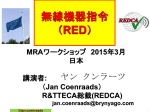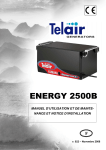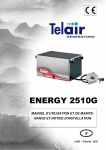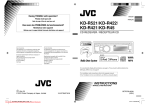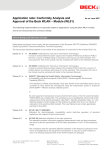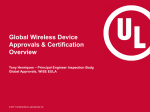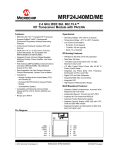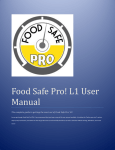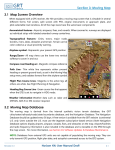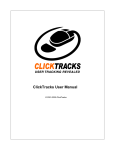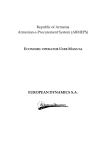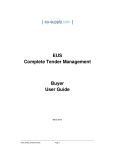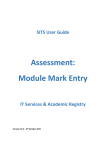Download RED
Transcript
Radio Equipment Directive MRA Workshop March 2015 Japan Presented by: Jan Coenraads Secretary of R&TTECA (REDCA) [email protected] ©jan.coenraads 1 Presentation Content This presentation will cover: Some upcoming changes in EU for equipment covered by the Radio Equipment Directive – RED 2014/53/EU some specific aspects + questions and answers. For general aspects of the RED see also 2014 Workshop presentation! 2 Relevant documents in future for Telecommunication equipment 1. Directives (EMC, LVD, RED) 2014/30/EU, 2014/35/EU & 2014/53/EU; 2. Blue Guide 2014; 3. Guides for the Directives (to be developed); 4. HS List in the OJEU; 5. EU Commission & R&TTECA sites; 8. Radio equipment related websites: ECC, EFIS, ETSI, CENELEC, etc. The specific product legislation for Telecom LVD - Electrical equipment designed for use within certain voltage limits (2006/95/EC) (2014/35/EU) EMCD - Electromagnetic Compatibility (2004/108/EC) (2014/30/EU) R&TTE Directive (1999/5/EC) Radio Equipment Directive 2014/53/EU EMCD and LVD never apply for Radio Equipment under RED EU legislation is applicable : - when the product is placed on the market until it reaches the enduser. “transferring products for testing or validating pre-production units is considered still in the stage of manufacture” - to all forms of supply, including distance selling. - to newly manufactured, used and second-hand products imported from a third country when entering the EU market for the first time A product is made available on the EU market when supplied for distribution, consumption or use, as a commercial activity, whether in return for payment or free of charge Each individual product must comply with the Directives at the moment of placing on the EU market!! Timing of the RED (2014/53/EU) MS shall adopt and publish, by 12 June 2016, the national legislation, necessary to comply with this RED. They shall apply those measures from 13 June 2016. MS shall not impede, the making available on the market or putting into service of RE which is in conformity with the relevant Union harmonisation legislation applicable before 13 June 2016 and which was placed on the market before 13 June 2017. Art. 48 Art. 49 TRANSPOSITION PERIOD RED TRANSITIONAL PERIOD RED R&TTED R&TTED RED (transposed in MS 2) RED RED (transposed in MS 1) Remaining MS Today Only R&TTED DoC can be used N 1 2 Only R&TTED DoC can be used Moment of placing an individual product on the market 3 Only R&TTED DoC can be used 13th JUNE 2016 4 R&TTED DoC or: RED DoC can be used 13th JUNE 2017 5 Only RED DoC can be used 6 RED Timing consequences RED is applicable from 13 June 2016. So before 13/6/2016: The RED shall not be used. DOC making reference to the RED shall not be used. RED NB’s shall not issue Reports & Certificates with RED reference! 7 RED - Radio Equipment Directive 2014/53/EU Main elements Applicable from 13 June 2016. Transitional period 13/6/2016 – 13/6/2017 Has a changed scope! New Frequency range < 3000 GHz. Some specific extra new requirements. New Requirements to bring RED in line with the NLF requirements. (similar to EMCD/LVD) Module A and Module H assessment. New Module B/C assessment!! 8 Overview specific RED provisions (1) • Change of Scope What are the RED requirements? • Definition of RE • Essential requirements • Provisions for Software Defined Radio • Registration scheme for certain RE • Extra information in user manual 9 Overview specific RED provisions (2) • “Simplified DoC“ allowed • Geographical information in package • New Conformity Assessment Procedures • NB ID number only if Module H is used • Additional formal non-compliances 10 Deleted Items in the RED compared to R&TTED • Notification • Alert Sign • CE marking in manual (only needs to be on product and packaging!) But RED product must be accompanied by a copy of the EU DoC or by a simplified EU DoC TEXT. (not applicable for EMCD or LVD!) 11 Why is “”Notification”” not necessary anymore?? EU Member States have to use the ERO Frequency Information System (EFIS) set up by the European Radiocommunications Office (ERO) in order to make information on the use of spectrum in each MS available to the public . RE Manufacturers can then search in EFIS and evaluate whether and under which conditions RE may be used within each MS. Therefore in the RED there is no need to include additional provisions, such as prior notification. 12 Equipment changing from LVD/EMCD to RED (1) Broadcast Receivers (and transmitters < 9kHz) are in the RED scope per 13 June 2016 (move out of EMCD & LVD) There is a transition period until 13 June 2017. Those products can thus use either new EMCD (in operation per 20 April 2016) or the RED. After 13 June 2017 they can only apply the RED. 13 Equipment changing from LVD/EMCD to RED (2) So for 2 months only (20 April 2016 – 13 June 2016) these products MUST use the NEW EMCD &LVD and then move to the RED (or stay in EMCD/LVD until 13/6/2017). The EU Commission has requested the National authorities to apply a pragmatic approach during this period! In general products during the transition period need to have a DOC that clearly indicate to which Directive they apply. (so do not indicate both Directives on your DOC!). 14 Transition for Equipment changing from R&TTED to LVD & EMCD (1) This applies to Telecom Terminal equipment – TTE (all equipment after the Network Termination point), not having a radio function. Examples: Office telephone exchanges, Telephones, Fax machines, Routers, In-house PLC equipment etc. 15 Transition for Equipment changing from R&TTED to LVD & EMCD (2) On 13 June 2016 they automatically move to the New EMCD & New LVD. So these equipment MUST use the new EMCD and New LVD from 13 June 2016 onwards. There is no transition period! However the Commission requests the national authorities to apply a pragmatic approach and accept the “old” DOC’s to be used for a certain period (may be until end of 2016?). 16 Radio inside = RED!! It does not matter what the Main function is! 2014/53/EU + EMCD LVD = RED RED What changes when I incorporate a wireless device? The routes to compliance (e.g Module H) Several administrative requirements Some technical requirements Test requirements (harmonised standards) One of the problems can be: Emission limits for RED HS more severe/different than for EMCD HS Where can I get guidance for this? TR 102 070: “Guide to the application of harmonized standards to multi- radio and combined radio and nonradio equipment” • currently under consideration R&TTECA TGN 01 (see www.rtteca.com) Technical Guidance Note on the R&TTED compliance requirements for a Radio Module and the Final Product that integrates a Radio Module It is expected that the RED Guidelines (to be developed) will address this issue in detail RED Conformity Assessment Procedures Safety aspects 1a EMC aspects 1b Yes Radio aspects 2 and 3 HS fully applied ? No Module A (standard route) ANNEX II Module B+C Manufacturer or can always (Mandatory NB use) Module B+C (NB use) choose the module ANNEX III Voluntary or or Module H Module H (NB use) (Mandatory NB Use) NEW ANNEX IV 20 More than 2 Directives apply RE can be built into products that are also under the scope of other Directives. This may lead to other requirements having preference. Examples of such other Directives: Toy Directive Medical Equipment Directive 21 Question: The RED allows the CE marking to be smaller than 5 mm. What if I have a radio controlled Toy? Answer: You need to follow all applicable Directives (RED and ToyD) to your product. The ToyD does not allow CE marking less than 5 mm, so the CE marking would need to comply with that. 22 Manufacturers Sample testing 1. Check risks related to health and safety of end-users, 2. Test sample of RE made available on the market, 3. Investigate 4. Keep a register of complaints, of non-conforming RE and RE recalls, and 5. Keep distributors informed of any such monitoring. Note: Not in EMCD and LVD!! Question: Is complying with all the RE Harmonised Standards comparable to have done the risk assessment? Applying the HS is the basis, but you should be able to understand what the risks of the RE are. The HS may however not cover some aspects (e.g. ageing of products, specific use, frequency ranges not covered). The Commission indicated that a manufacturer should perform a risk assessment first and then apply the HS to demonstrate that the risks have been adequately addressed and mitigated. Administrative non-compliances are not considered to be a risk, only technical ones. Extra RED requirements (not in EMCD & LVD) Software requirements Product registration Simplified DoC Information in user instruction Geographical information 25 Registration of certain RE START 12 June 2018 Only for RE that have been identified for registration (based on low compliance rate) Registration includes providing elements of the technical documentation The Commission shall specify which RE categories are concerned and the elements of the technical documentation to be provided and the operational rules for registration and affixing the registration number on RE for the categories specified. Each RE will be allocated a registration number that must be affixed to each RE of the type. Manufacturers shall use the central system for registration provided by the Commission. That system shall ensure appropriate control of access to information of confidential nature. RED Instruction manual RE must be accompanied by instructions and safety information in a language which can be easily understood by consumers and other end-users, as determined by the MS concerned. Instructions shall include: Information on RE intended use. Where applicable, a description of accessories and components, including software, which allow the RE to operate as intended. Such instructions and safety information, as well as any labelling, shall be clear, understandable and intelligible. + Only for transmitters: Frequency band(s) in which the RE operates; Maximum radio-frequency power transmitted in the frequency band(s) in which the RE operates. 27 Product information Manufacturers shall ensure that RE: bears a type, batch or serial number or other element allowing its identification, contain their name, registered trade name or registered trade mark and the postal address at which they can be contacted. The address shall indicate a single point at which the manufacturer can be contacted. The contact details shall be in a language easily understood by endusers and market surveillance authorities. Where the size or nature of the RE does not allow it, the required information shall be provided on the packaging, or in a document accompanying the radio equipment. 28 Geographical area information The packaging shall: allow to identify the MS or the area within a MS where RE can be put into service; alert the user to potential restrictions or requirements for authorisation of use in certain MS. Such information shall be completed in the instructions accompanying RE. The Commission may specify how to present this information. 29 Declaration of Conformity – DoC The DoC shall be a complete copy of the original. be packed with each RE. Not for EMCD/LVD have the “model structure” and it shall be continuously updated. be translated into the language(s) required by the MS in which market the apparatus is placed or made available. 30 Simplified DoC (not for EMCD or LVD!) Copy of full EU DoC shall accompany each RE. This may be replaced by a: simplified EU DoC accompanying each RE! If a simplified EU DoC is provided, it shall be directly followed by the exact internet or e-mail address where the full EU DoC can be obtained. 31 Simplified DoC (not for EMCD or LVD) (2) Simplified EU DoC shall contain the following text: Hereby, aaaaa declares that the RE type [designation of type of RE] is in compliance with RED 2014/53/EU. The full text of the EU DoC is available at the following internet address: ********** It shall be translated into the language(s) required by the MS in which market the RE is placed or made available. (copies of simplified DoC can be found in each language version of the RED or on EC website) 32 Question: What is the advantage of using the simplified DoC? 1.Save paper by providing only the simplified DoC text in the product package. On your website you then store the Full DoC in all the necessary languages. 2.A major advantage could be that when something needs to change in the DoC (remember the RED says the DoC should be continuously updated) you can easily do that on the website without having to change the paperwork in the product package. The standard simplified text does not need to change in most cases. Question: Must I mention Batch or Serial numbers of my product on the DoC? Answer: This identification is mandatory to acquire a link between the product and the documentation. For some products it may be necessary to use batch or serial number to correctly identify the product. This could be e.g. the case for explosives or certain medical implants. But for most equipment under the RED, the product name and model or type would normally be sufficient to link the documentation to the correct equipment. Question: What happens if a HS change and my product is still being put on the market Answer: Check if (re) testing is necessary (change of “”state of the art””?) Adapt Technical information Change DoC (HS reference) Ask help from NB if necessary Question: Can RE manufactured in China choose an NB (CAB) in Japan? Answer: Yes a manufacturer is totally free to choose the service of any appointed NB (on the EU NANDO list!!) including those outside the EU, such as the (possible) 2 RED NB in Japan. Question: If New RED, EMCD or LVD is operational (new number), do I need to change the DoC of my product? Answer: If apparatus is still entering the EU market, then you must use the new number on the DoC, so update the DoC (but also check if reassessment is necessary!). DOC must be up to date when individual product enters the market! Note: DoC Layout! 4 current R&TTED Marking Appearances in future will change into 2 RED Appearances R&TTED: Harmonised standards applied for radio aspects, no user restrictions, no NB used. RED Standard route (Module A) or module BC used R&TTED: Harmonised standards applied for radio aspects, user restrictions, NB not used. 3521 3521 R&TTED: Harmonised standards for radio aspects not applied or module B/C applied for other aspects, user restrictions, NB used R&TTED: Harmonised standards for radio aspects not applied or module B/C applied for other aspects , no user restrictions, NB used RED: Module H used, number is of NB 38 When Technical documentation is not complying and fails to present sufficient relevant data or means used to ensure compliance of RE with the essential requirements, Market surveillance authorities may ask the manufacturer or the importer to have a test performed by a body acceptable to the market surveillance authority at the expense of the manufacturer or the importer within a specified period in order to verify compliance with the essential requirements. 39 Is R&TTECA of interest to you? (REDCA in future) Most rapid access to the constantly changing EU legislation/regulation and EU Standards development. Possibility to get rapid answer from fellow experts on specific R&TTED (RED) (technical) questions. > 130 members Annual Fee: 500 EURO Interested? Go for information to: www.rtteca.com or talk to me!! 40 End of Presentation Thank you for your attention Any QUESTIONS ?? 41









































